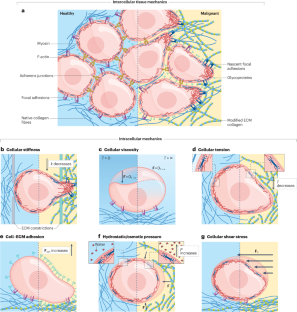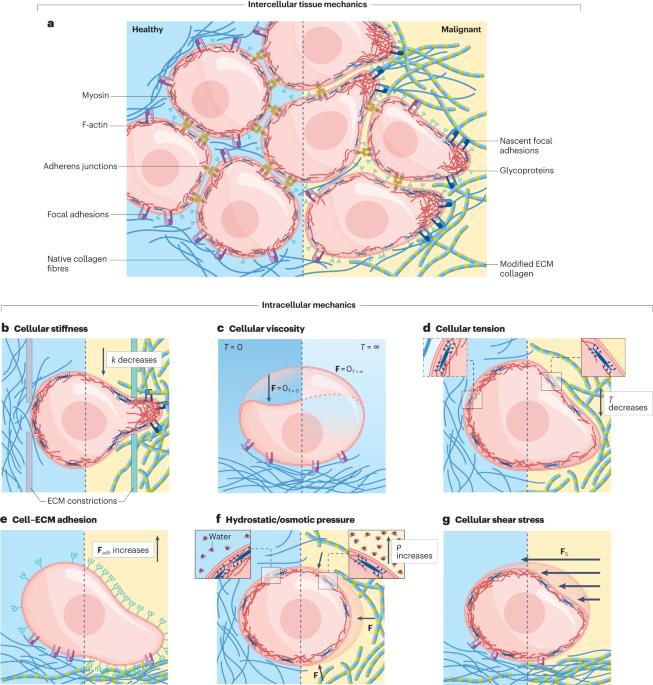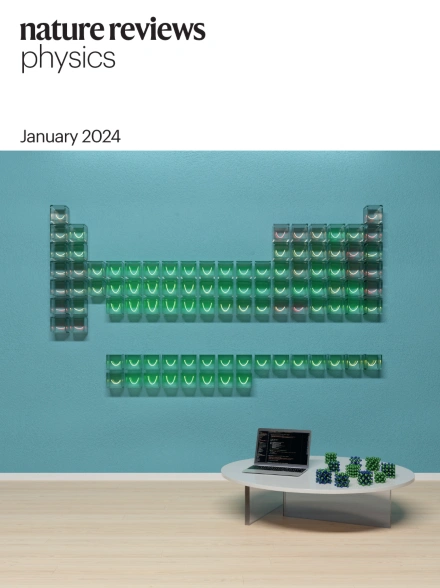Mechanical properties of human tumour tissues and their implications for cancer development
IF 44.8
1区 物理与天体物理
Q1 PHYSICS, APPLIED
引用次数: 0
Abstract
The mechanical properties of cells and tissues help determine their architecture, composition and function. Alterations to these properties are associated with many diseases, including cancer. Tensional, compressive, adhesive, elastic and viscous properties of individual cells and multicellular tissues are mostly regulated by reorganization of the actomyosin and microtubule cytoskeletons and extracellular glycocalyx, which in turn drive many pathophysiological processes, including cancer progression. This Review provides an in-depth collection of quantitative data on diverse mechanical properties of living human cancer cells and tissues. Additionally, the implications of mechanical property changes for cancer development are discussed. An increased knowledge of the mechanical properties of the tumour microenvironment, as collected using biomechanical approaches capable of multi-timescale and multiparametric analyses, will provide a better understanding of the complex mechanical determinants of cancer organization and progression. This information can lead to a further understanding of resistance mechanisms to chemotherapies and immunotherapies and the metastatic cascade. This Review summarizes differences in several mechanical properties that play a role in human cancer development, at the cell and tissue levels. Comprehensive cell and tissue quantitative mechanical properties are provided based on cancer types and organs of origin.


人体肿瘤组织的机械特性及其对癌症发展的影响
细胞和组织的机械特性有助于决定其结构、组成和功能。这些特性的改变与包括癌症在内的许多疾病有关。单个细胞和多细胞组织的拉伸、压缩、粘附、弹性和粘性特性主要通过肌动蛋白和微管细胞骨架以及胞外糖萼的重组来调节,而这反过来又推动了许多病理生理过程,包括癌症的进展。本综述深入收集了活体人类癌细胞和组织各种机械特性的定量数据。此外,还讨论了机械特性变化对癌症发展的影响。利用可进行多时间尺度和多参数分析的生物力学方法收集的有关肿瘤微环境机械特性的更多知识,将有助于更好地了解癌症组织和进展的复杂机械决定因素。这些信息将有助于进一步了解化疗和免疫疗法的抗药性机制以及转移级联。
本文章由计算机程序翻译,如有差异,请以英文原文为准。
求助全文
约1分钟内获得全文
求助全文
来源期刊

Nature Reviews Physics
Multiple-
CiteScore
47.80
自引率
0.50%
发文量
122
期刊介绍:
Nature Reviews Physics is an online-only reviews journal, part of the Nature Reviews portfolio of journals. It publishes high-quality technical reference, review, and commentary articles in all areas of fundamental and applied physics. The journal offers a range of content types, including Reviews, Perspectives, Roadmaps, Technical Reviews, Expert Recommendations, Comments, Editorials, Research Highlights, Features, and News & Views, which cover significant advances in the field and topical issues. Nature Reviews Physics is published monthly from January 2019 and does not have external, academic editors. Instead, all editorial decisions are made by a dedicated team of full-time professional editors.
 求助内容:
求助内容: 应助结果提醒方式:
应助结果提醒方式:


